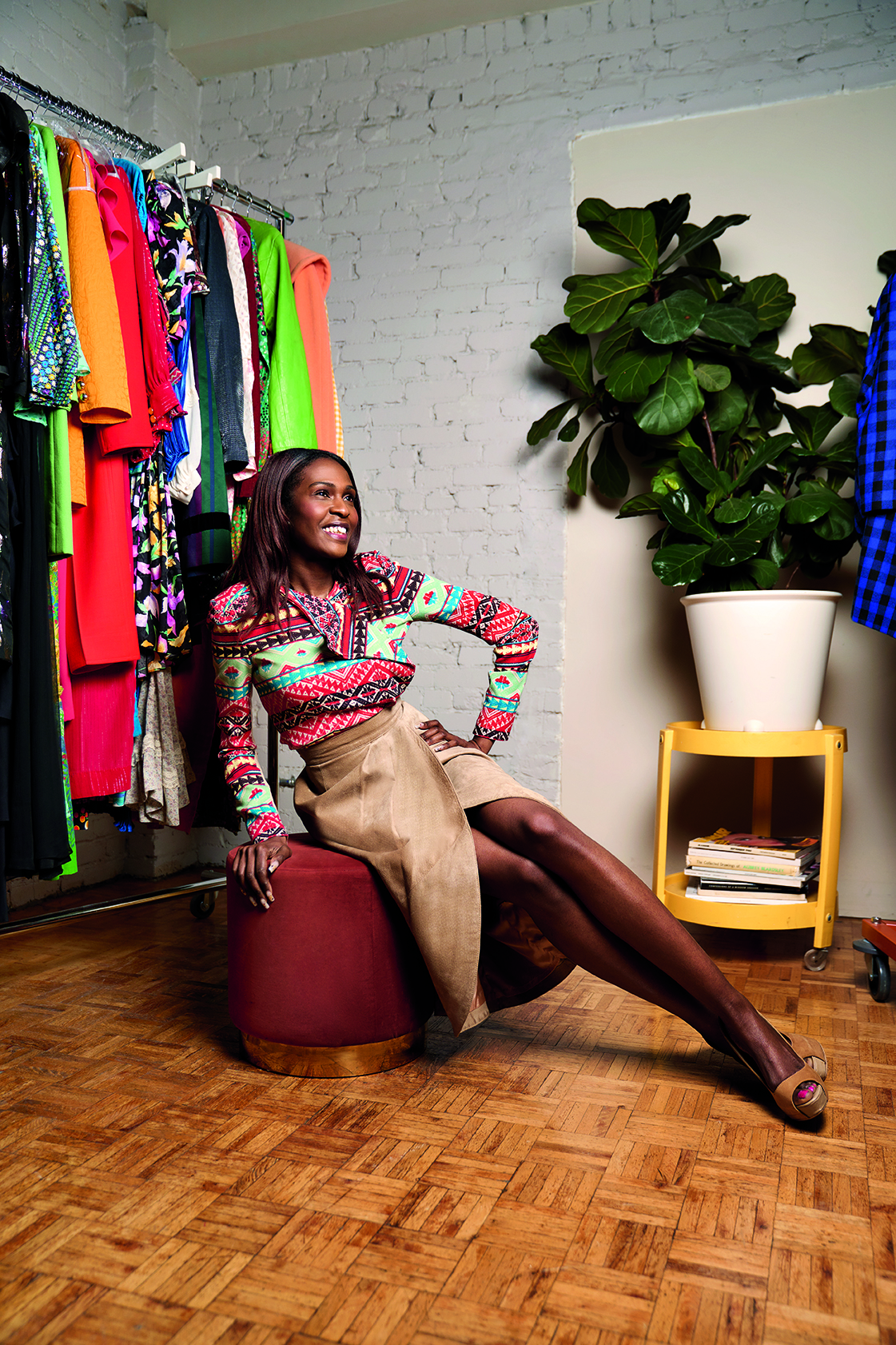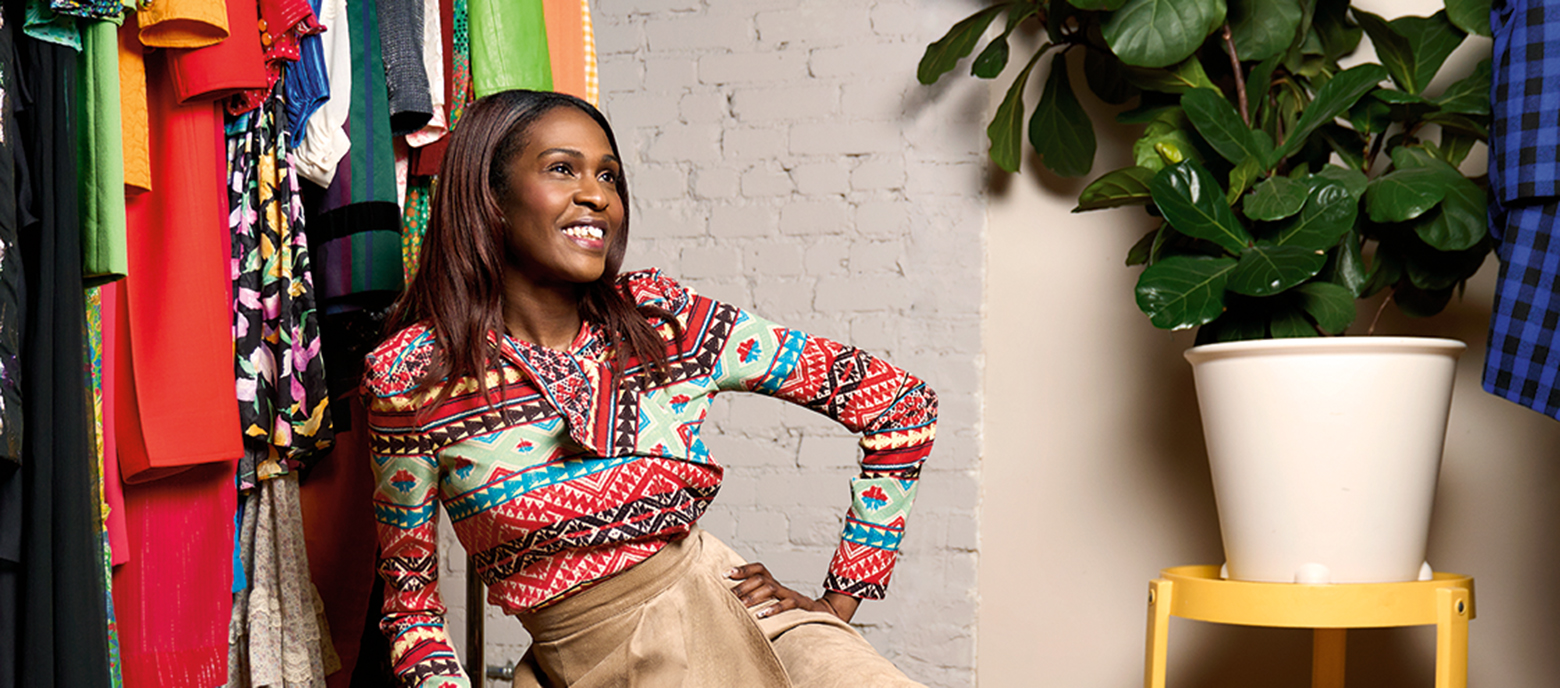Have you had the feeling lately that you’re at a closet-related crossroads? Perhaps the easing of pandemic restrictions means you’ve returned to the office and need to upgrade your professional wardrobe. Or maybe you need a handful of new outfits now that cocktail parties and client lunches have made a comeback. Before you embark on a panic-induced wardrobe overhaul, take a step back and consider the best path forward.
The fashion industry, after all, is rife with systemic problems. Many well-known brands have a long track record of unethical labour practices, including unsafe working conditions and abysmal wages. To produce new clothing, meanwhile, companies often rely on pesticides, toxic chemicals and poisonous dyes. The reality is bleak.
Thankfully, it is possible to look and feel confident while keeping the well-being of workers and the health of the planet in mind. In fact, some of Toronto’s most fashionable lawyers have done just that. To be a more thoughtful consumer yourself, why not follow their lead?

Vintage for the win
Amelia McLeod, a loyal customer at Nouveau Riche Vintage, shows off two pieces she bought at the shop: an Anne Klein abstract-print blouse and silky trousers. Her outfit also features Miista shoes that she bought from a local shop on Roncesvalles and a Hugo Boss jacket.
Amelia McLeod, who is an associate at Aird & Berlis LLP, has long internalized the idea that “clothing shouldn’t be disposable,” a philosophy passed down by her fashion-forward mom. When adding an item to her wardrobe, she thinks critically about whether she’ll be able to wear it in five to 10 years.
From that vantage point, McLeod is a loyal customer at vintage shops across the city. In her experience, vintage pieces tend to have a much longer lifespan than new clothes. And, at the same time, the second-hand marketplace doesn’t contribute to the pollution and exploitation that’s rampant in the modern fashion industry. As she puts it, “You’re confident that you’re making an environmentally sustainable or ethically responsible choice.”
McLeod—who describes her style as “timeless with a twist”—loves vintage shopping for another reason: the expertise of store owners. As a regular visitor to Nouveau Riche Vintage in the Junction, she’s come to value owner Andréa Lalonde’s guidance. Lalonde has gently nudged McLeod, for instance, to try out a broader range of silhouettes. “I feel encouraged to take baby steps out of my comfort zone,” says McLeod. “As soon as you start shopping vintage, a whole new world of shapes and tailoring philosophies opens up.”
Recently, McLeod purchased a 1980s-era silk skirt at Nouveau Riche, an item she wouldn’t have found anywhere else. “I carry pieces all the way back to the 1920s,” says Lalonde. At the outset of a new client relationship, Lalonde recommends a one-on-one appointment. In each consultation, she delivers the same message: “Let’s try on as much as possible, even if it doesn’t seem like you.”
To increase the longevity of her attire, McLeod takes proper care of each item. That might sound like a trivial act, but, in truth, it’s a powerful way to prevent waste. “There are so many things that you can be doing that you might not immediately equate with sustainable fashion,” says Kelly Drennan, the executive director of Fashion Takes Action, a Toronto-based non-profit that advocates for a healthier fashion industry. No matter where you bought a piece of clothing, says Drennan, make sure to follow the laundering instructions on the label. And instead of throwing away an item with a tear, have it mended.
To handle minor repairs herself, McLeod recently took a sewing class, after meeting the instructor at a vintage shop. “What I find interesting is how much the vintage shopping, sewing and mending communities overlap,” she says. “It’s all about people who engage with clothing thoughtfully—and sustainability is a natural by-product because you’re thinking more deliberately about what you’re wearing.”

Mix and match
Nofil Nadeem’s ensemble features a green sport coat purchased from Papa Love Vintage, a Banana Republic dress shirt, Ralph Lauren trousers and vintage oxford shoes that he bought in Pakistan. The scarf in his pocket, supplied by Nouveau Riche Vintage, adds a bit of extra colour to the outfit.
Nofil Nadeem, an associate at Heeney Vokey LLP, a small employment firm in Toronto, is another fan of the vintage world. “More and more, I’m trying to shop second-hand,” says the regular at Papa Love Vintage in Leslieville. That doesn’t mean he’s a constant shopper. He understands that overconsumption at vintage stores can lead to a shortage in what’s available on the second-hand market, driving other consumers to purchase new, less conscientious items. “Every decision that we make when we buy something has a consequence,” he notes.
Nadeem isn’t shy about adding a bit of spice to his daily wardrobe: he’ll occasionally wear a pair of leather pants or heeled boots to the office. Before heading to a vintage store, he likes to set a clear objective. “I try to go shopping with two or three different things that I’m looking for,” he says. “Whether that’s a great pair of jeans, a coat or something in a particular colour.”
His involvement in Ballroom—a scene started by Black and Latinx LGBTQ+ communities, especially transgender women, to create a space for queer people of colour to be celebrated—has also been instrumental in fostering his love of locally designed, custom-made clothing. “As a queer person of colour myself,” says Nadeem, “it’s been a great community to be a part of to see myself represented.”
Nadeem has purchased items from members of the Toronto Ballroom scene who are designers, including a made-to-measure satin suit by Diséiye Thompson. Another favourite piece in Nadeem’s closet is a denim jacket embellished with a painting of the artist Lorde, done by local creative DJ Stiles. Some of these items are newly made, but Nadeem knows that they’re excellent quality and will stand the test of time. “It’s always better to have fewer well-made pieces,” he says, “than a bunch of things that are just going to take up space in your closet.”

Test of time
No matter where Raquiya Austin buys her clothes, she prevents waste and overconsumption by painstakingly taking care of each item. In this photo, she’s wearing a decade-old patterned BCBG jacket, a vintage 1980s Danier tulip skirt and Aldo shoes that are 10 years old.
Raquiya Austin, legal counsel at the air-ambulance service Ornge, is fortunate to work in an environment that allows her personal style to shine. “Colour is something that’s always very important to me, and I’m very big on accessories,” she says. Even when wearing a suit, she keeps it fun and casual. “I’ll wear the bottoms with an acceptably cropped shirt and white sneakers.”
With an eye to sustainability, Austin frequents consignment shops like Closet Café and The Preloved Bag. “Consignment helps to reduce waste,” she says. “It gives people an opportunity when they’re done with a particular luxury item to have it resold to an interested individual.”
When buying new, Austin prioritizes mindfully made, local items. One favourite brand is Cassandra Elizabeth, which Austin turns to for contemporary loungewear. “Upcycling is a part of the brand’s mandate,” she says. “If you have gently used items from them that you’re no longer wearing, you can give your piece back and they will reuse the fabric in a different way for other products.” Austin is quick to admit that she has shopped at fast-fashion outlets. But when she does, she seeks out items that she won’t discard in short order.
Anika Kozlowski, an assistant professor of fashion design, ethics and sustainability at Toronto Metropolitan University, is a steadfast critic of how the fashion industry operates. In her view, deep systematic overhauls are necessary. But she also knows that, on an individual level, perfection is impossible. “When I buy something new, it’s because I can’t find it anywhere else,” she says. “I know I love it, and I’m going to have it for a really long time.”
Like McLeod, Austin developed her sustainability mindset at a young age. “My mother always paid attention to where her goods were made, what the fabrics were and followed the care instructions,” she says. “Now, when I’m shopping, I make sure that I’m purchasing from quality brands with quality designs that use quality materials—and that I value the company’s philosophy.”
Rethink rentals
Boutique rental shops might seem like a sustainable option, but the truth is more complicated
In the past decade, the clothing-rental industry has gained serious momentum. The idea is simple. A working professional can rent high-end clothing on a regular basis, in order to wear a variety of outfits without having to purchase each one for the long term. In theory, this allows customers to share clothes in a sustainable manner.
Unfortunately, it doesn’t work like that in practice. Every time an outfit is rented, it has to be shipped, returned, dry-cleaned and sent out again—sucking up resources and burning fossil fuels at every step. Worse still, it can drive consumerist behaviour by reinforcing the notion that we need to keep wearing new things all the time.
For truly special occasions, like weddings, rental companies are a reasonable option. But beyond that, they’re likely a drag on the planet’s well-being.
Feel-g00d brands
When it’s time to update your wardrobe, look to these names for sustainable items
Kotn
For men’s and women’s basics, knitwear and women’s suiting
Founded with the goal of crafting the “perfect” T-shirt, Kotn has since expanded to offer suiting, loungewear and knits. Known for its use of non-toxic dyes, the company is also certified for its high standard of social and environmental impact. One of the brand’s stores is located at Queen and Niagara, near Trinity-Bellwoods Park.
Miik
For women’s loungewear and office staples like blazers, trousers and skirts
This Canadian label serves up business and casual attire, including a selection of reversible items (which can be turned inside out to create a new look). The company, which mills its fabric from sustainable fibres, prioritizes durable materials that will last. Items are available for purchase on the Miik website.
Moss Bros.
For men’s suiting, casual attire and shoes
This U.K.-based brand publishes statements that outline its equitable supply-chain and pay practices.The label also carries a line of sustainable suits. Canadians can purchase items online.
Holt Renfrew
For a range of wardrobe items
In 2013, Holt Renfrew launched the multi-brand H Project to highlight artisanal, thoughtfully made goods from around the world. Today, it’s home to ethically minded labels like Stella McCartney and the Canadian-founded denim brand Triarchy.
This story is from our Sping 2023 Issue.
Photography by May Truong. Hair and makeup by Alanna Chelmick. Shot on location at Nouveau Riche Vintage.


